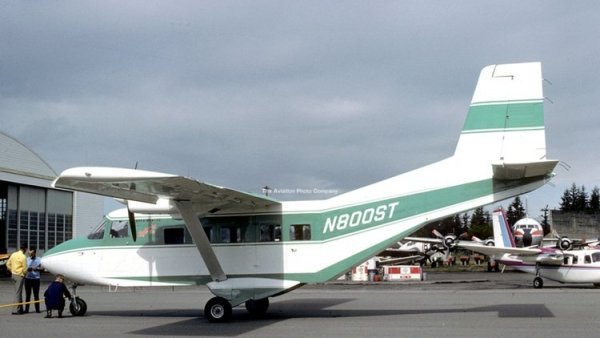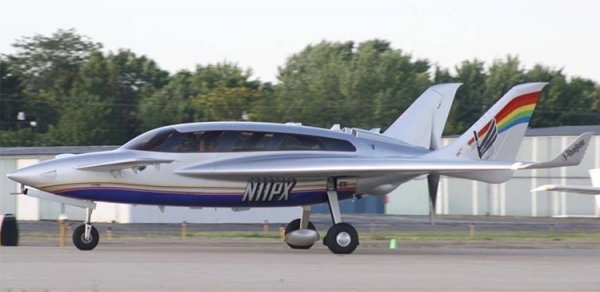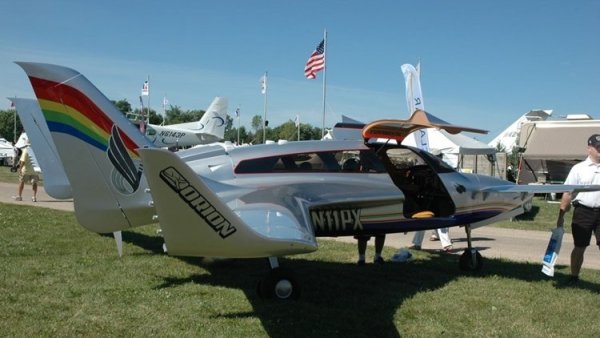-
Posts
7,699 -
Joined
-
Last visited
-
Days Won
67
Content Type
Profiles
Forums
Gallery
Downloads
Blogs
Events
Store
Aircraft
Resources
Tutorials
Articles
Classifieds
Movies
Books
Community Map
Quizzes
Videos Directory
Posts posted by red750
-
-
One owned by actor Vince Vaughan, the Learjet by Motley Crue singer Vince Neil. Learjet pilot died.
-
 2
2
-
 1
1
-
-
 Cirrus Tells Owners Not To Use Unleaded Fuel
WWW.AVWEB.COM
Cirrus Tells Owners Not To Use Unleaded Fuel
WWW.AVWEB.COM
Cirrus is concerned G100UL may cause structural damage to its airplanes. -
-
 Black Hawk helicopter's shocking aviation blunder moments before crashing into plane in DC is confirmed in new NTSB report | Daily Mail Online
WWW.DAILYMAIL.CO.UK
Black Hawk helicopter's shocking aviation blunder moments before crashing into plane in DC is confirmed in new NTSB report | Daily Mail Online
WWW.DAILYMAIL.CO.UK
Questions had been raised about how the collision - which killed all 67 people involved - occurred, given pilots follow strict protocol about the altitudes they can safely reach.-
 1
1
-
-
The Bering Air Caravan plane was reported 'overdue' when it failed to arrive in Nome about 4pm local time.
It was traveling from Unalakleet with nine passengers and one pilot on board.
Crews are frantically working to establish the plane's last coordinates, but weather conditions in the area are so poor that it has limited the ability to launch an air search.
 Bering Air flight carrying 10 people vanishes while flying over Alaska | Daily Mail Online
WWW.DAILYMAIL.CO.UK
Bering Air flight carrying 10 people vanishes while flying over Alaska | Daily Mail Online
WWW.DAILYMAIL.CO.UK
A flight with 10 people on board has vanished over Alaska, sparking a frantic search.-
 1
1
-
-
The wing of a taxying JAL aircraft sliced into the rudder of a Delta jet at Seattle airport.
-
The Dominion Skytrader was a Canadian prototype STOL utility aircraft, originally designed by the Dominion Aircraft Corporation in Vancouver, British Columbia, but built in the United States in the early 1970s. Attempts to market the aircraft continued until the late 1980s, but proved fruitless.
The Skytrader was a conventional high-wing, strut-braced monoplane with fixed tricycle undercarriage. The design was optimised for easy freight handling and featured a fuselage of rectangular cross-section with large loading doors to the side and a loading ramp at the rear. The aircraft's tail unit was angled upwards from the rear fuselage to facilitate loading operations beneath it, and the main undercarriage was fitted in sponsons on the fuselage sides so as not to intrude into the internal cargo volume. Passenger, freight, executive transport, and water-bomber versions were projected.
As of 2007, the prototype lay derelict, with engines stripped, at Washington County Regional Airport, in Hagerstown, Maryland.
-
 1
1
-
 1
1
-
-
 MSN
WWW.MSN.COM
MSN
WWW.MSN.COMTypical Trump response above.
I haven't been through all the detail reported here, but could it be as simple as the wrong QNH set on the helicopter that had it at the wrong altitude?
-
 1
1
-
-
 394K views · 23K reactions | The first Beechcraft, manufactured in...
WWW.FACEBOOK.COM
394K views · 23K reactions | The first Beechcraft, manufactured in...
WWW.FACEBOOK.COM
The first Beechcraft, manufactured in 1932, used a split-rudder airbrake instead of flaps to slow down for landing. Thanks @parishcharles for the demo! Visit @beechcraftheritagemuseum to see this...-
 1
1
-
-
-
-
It appears the original topic has been restored.
-
 1
1
-
-
My sincere apologies to all. In trying to move the Learjet 55 story to a new topic, I seem to have deleted the original thread. I thought I followed Ian's directions correctly.
-
 1
1
-
-
-
Further details on the Learjet 55 crash.
The Federal Aviation Administration has confirmed that there were six people onboard the jet. In their initial statement, FAA had originally reported that there was only two people on board.
The jet was operated by Jet Rescue Air Ambulance, and according to a statement from them was transporting a young girl who had been receiving treatment.
Four crew members had been onboard the flight, alongside the young girl, who remains unknown, and her mother. They were travelling home to Tijuana, Mexico.
-
 1
1
-
-
A second aircraft crash in America,
A plane carrying two people has crashed in a residential area of Philadelphia, causing chaotic scenes on the ground.
The plane, a Learjet 55, had been travelling to Springfield-Branson National Airport in Missouri after departing the Northeast Philadelphia Airport on Friday evening.
After less than a minute in the air, the jet was caught on doorbell footage hurtling to the ground before exploding in a large fireball.
-
 2
2
-
 1
1
-
-
-
The Auster B.4 was an unusual British development of the Auster family of light aircraft in an attempt to create a light cargo aircraft.
The conventional fuselage was considerably redesigned, turning it into a pod-and-boom configuration carrying the tail unit on a high boom. The rear of the fuselage pod was equipped with clamshell doors for easy loading and unloading, and a quadricycle undercarriage was fitted, retaining the mainwheels from earlier Auster designs, but adding a tailwheel to each side of the fuselage pod. The fuselage floor had fittings for seats, cargo tie-downs, or litters for the air ambulance role.
The prototype was exhibited at the Farnborough Air Show in September 1953.
Although evaluated by the British Army in military markings, neither civil nor military orders ensued, and no examples were constructed beyond the single prototype.
-
 1
1
-
-
 All the catastrophic mistakes that led to DC plane crash as it is revealed air traffic controller left tower early | Daily Mail Online
WWW.DAILYMAIL.CO.UK
All the catastrophic mistakes that led to DC plane crash as it is revealed air traffic controller left tower early | Daily Mail Online
WWW.DAILYMAIL.CO.UK
An air traffic controller at Reagan National was left to handle both helicopter traffic and manage planes - which should have been a divided duty.-
 1
1
-
-
A grief-stricken widow who lost her husband on American Airlines Flight 5342 when it crashed in Washington DC has revealed they made a spontaneous decision on who would be on the flight.
Natalya Gudin and her husband Alexandr Kirsanov coached two young figure skaters but only one of them would accompany the pair to Kansas for the National Development Camp for figure skating.
Her husband was the one who ended up making the trip alongside the two kids, who all lost their lives in the midair collision.
Speaking with ABC News, Gudin said: 'I lost everything. I lost my husband. I lost my students. I lost my friends.'
-
 2
2
-
-
 MARK MCEATHRON: I'm a Black Hawk helicopter pilot. This video shows all the red flags that led up to the deadly DC plane crash | Daily Mail Online
WWW.DAILYMAIL.CO.UK
MARK MCEATHRON: I'm a Black Hawk helicopter pilot. This video shows all the red flags that led up to the deadly DC plane crash | Daily Mail Online
WWW.DAILYMAIL.CO.UK
I'm a former Black Hawk helicopter crew chief and flight instructor. I know how quickly a routine flight can turn into a terrible tragedy.-
 1
1
-
-
Hero pilot Captain Sully shares terrifying theory on why DC plane crash happened:
 Hero pilot Captain Sully shares terrifying theory on why DC plane crash happened | Daily Mail Online
WWW.DAILYMAIL.CO.UK
Hero pilot Captain Sully shares terrifying theory on why DC plane crash happened | Daily Mail Online
WWW.DAILYMAIL.CO.UK
Sully, who famously landed a passenger plane on the Hudson River in 2009, has said that two factors could have made avoiding the chopper harder.-
 1
1
-
-
The Freedom Aviation Phoenix was a single-engine four-seat American airplane that was sold as a homebuilt composite canard aircraft.
The kit was produced at a facility on St. Lucie County International Airport at Ft. Pierce, Florida.
The Phoenix airframe was formed of carbon-fiber composite materials on factory molds. The aircraft was assembled as a homebuilt, with a factory-sponsored builder-assist program available.
.
The aircraft has a swept, dihedral canard mounted ahead of the cabin, and a swept main lifting surface. Each wing has a fin (with full-length rudder) mounted about midway to the tip. In addition, the wingtips have swept winglets, which provide additional yaw stability while decreasing induced drag.
The Phoenix is powered by a six-cylinder horizontally-opposed piston engine driving a pusher propeller. The tricycle landing gear is retractable.
Only one aircraft was ever built, and the company has since gone out of business.
-
 1
1
-
-
On 22/01/2025 at 7:49 PM, spacesailor said:
May I enquire as too, ' replying ' to the drifting thread .
To do , or, not to do ! .
That is my dilemma .
Spacey, don't reply, it only encourages them.



















A wild collection
in US/Canada General Discussion
Posted